Partially removed paint from the right wing
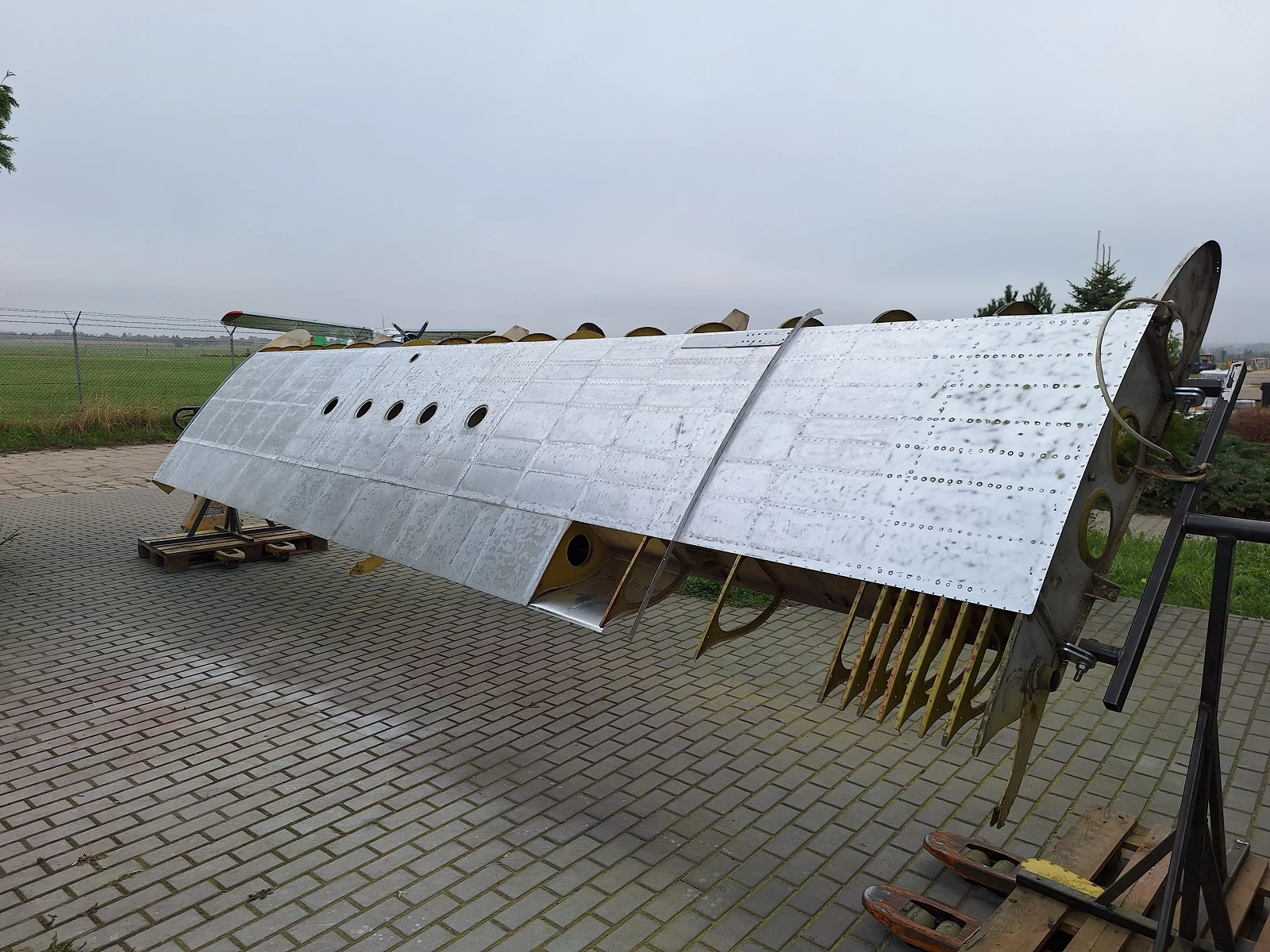
Project "Raven" more photos and some history - part 6.
More construction photos and a bit of history
Dd. story from part V. The aircraft was planned to house a variety of engines: K-5 (with 257 kW/350 hp), American Lycoming IO-720 (with 309 kW/420 hp) or turboprop engines. The airframe was to be smaller than the "Gawron", but a higher payload was envisaged. The project was presented to the United Aircraft Industries and was accepted as a fallback to the PZL M15 "Belfegor".
Construction of the aircraft began in 1971 at ZPD (Experimental Production Plant), then subordinate to the Aviation Institute. Since this plant had low capacity, there was a risk that the deadlines for making the wings would not be met. Consequently, temporary wooden wings, with a Clark Y profile, were made at SZD Bielsko. The PZL-106/I prototype with a T-shaped tailplane, short fuselage, wooden wing and powered by a Lycoming IO-720A1B engine was flown on 17.04.1973. Tests showed a small reserve of stability at high angles of attack, as well as insufficient engine thrust. Replacing it with a Pratt & Whitney PW-1340 engine gave good results, however, it was a demobilized unit and the stock of these engines was limited. In addition, political considerations made it necessary to select an engine based on Comecon resources.
Improved - the third - prototype PZL-106/III with PZL-3S (LiT-3S) engine and metal wing made the first flight on 12.10.1974. 7 copies of the information series were produced. The sixth copy was rebuilt in 1975, transferring the horizontal tailplane to the fuselage (first flight on 24.06.1975). The last two "Ravens" of the information series became prototypes of the PZL-106A version, with an extended fuselage and a classical tailplane. The earlier of the two (SP-WUK) was flown on 2.09.1976, the next (SP-WUL)- on 20.05. 1977.Serial production of PZL-106A began at CNPSL PZL-Warszawa in 1976 (according to [2]- in 1977). In 1975- 1976, a training variant was developed with an interchangeable instructor's cabin module attached instead of a chemical tank. In 1979, the PZL-106B was developed with the PZL-3S engine and a new wing with a NACA 2415 profile with a shorter stub , flown on 15/05/1981. It entered production from 1982. According to [2]- in 1979. PZL-106AR version with PZL-3SR engine with reducer and propeller of larger diameter was created, while according to [7]- the aircraft was flown on 15.11.1978. Since 1981, PZL-106AS version with ASz-62IR engine was produced, airframe ver¬sion PZL-106A (prototype launch- 19.08.1981). Most of the aircraft operated in Africa were converted to this version. Aircraft were also developed: PZL-106BS with ASz-62IR engine, flown on 8.03.1982, and PZL-106BR with PZL-3SR engine, flown on 8.07.1983. Since 1981, the PZL-106 "Turbo-Kruk" version with turboprop propulsion was worked on. On one PZL-106AT/I was tested in 1983 (according to [6]- 1981, according to [7]- flown 22.06.1981), a Pratt & Whitney PT6A-34AG turboprop engine (566 kW). In 1981, a firefighting variant was developed, equipped with a device for dropping a water or foam bomb.
We will continue the historical threadin future posts, and in the meantime, let's take a peek at the project's progress .
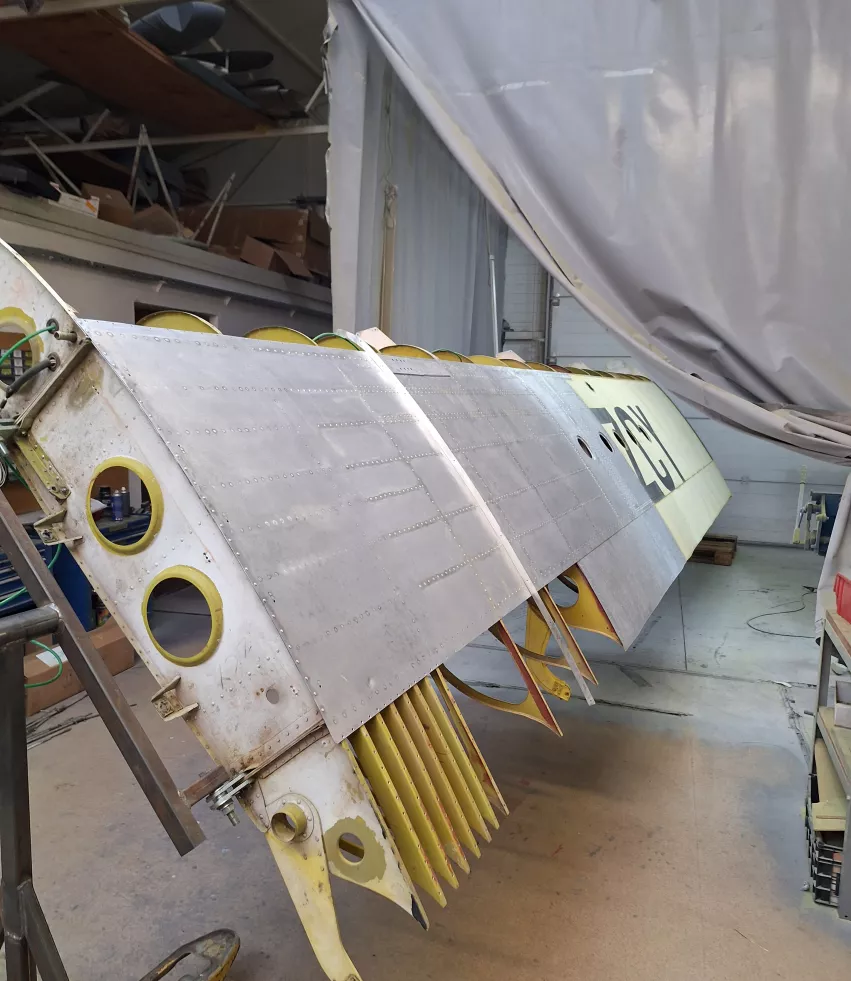
Left wing mounted in revolving racks
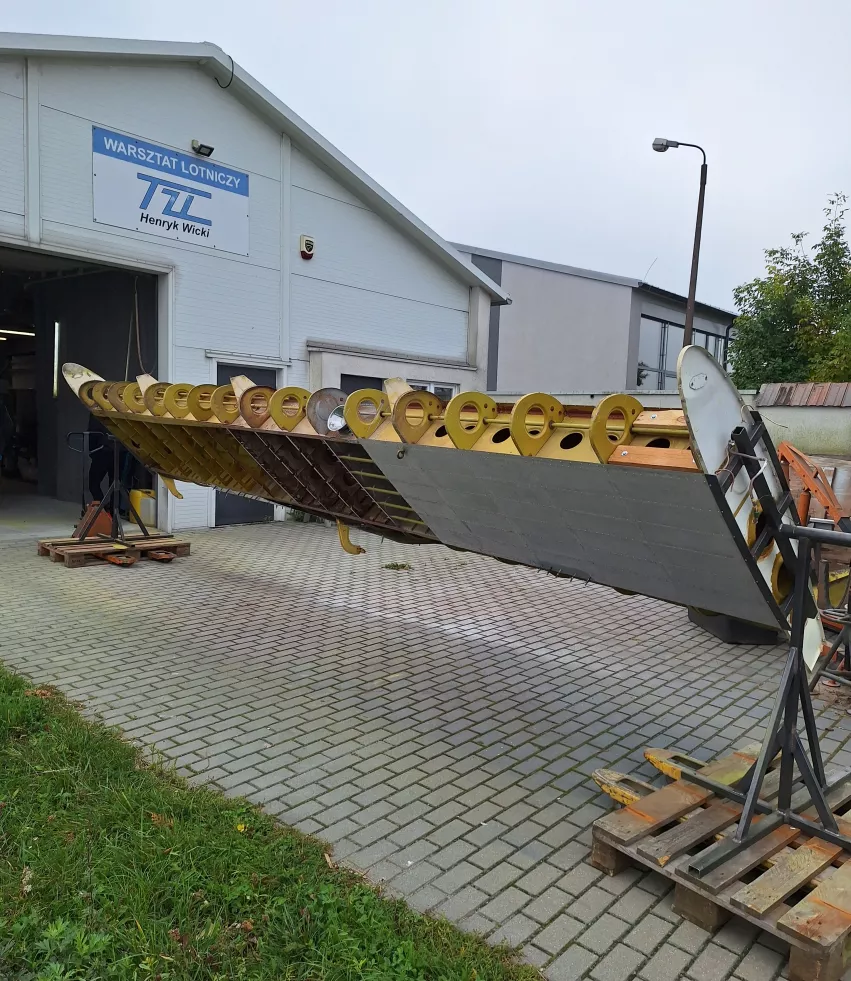
Installed gas control arens speed controller and stopcrank
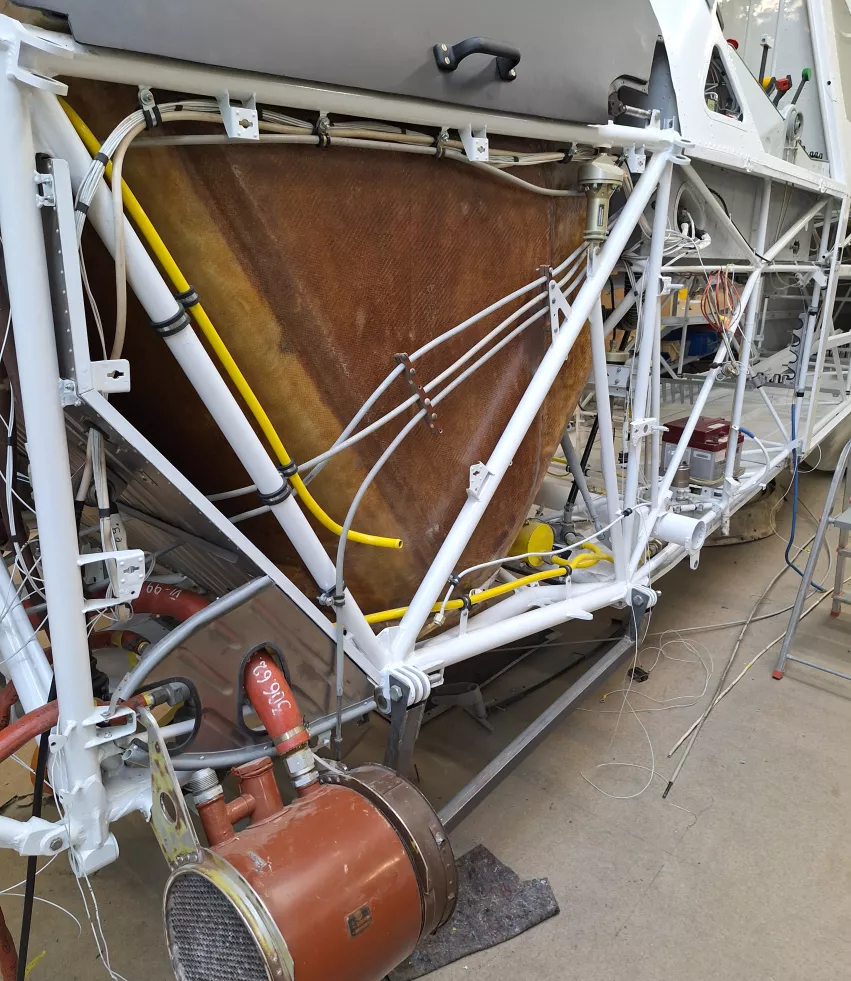
Installed valve rocker covers and engine frame cover
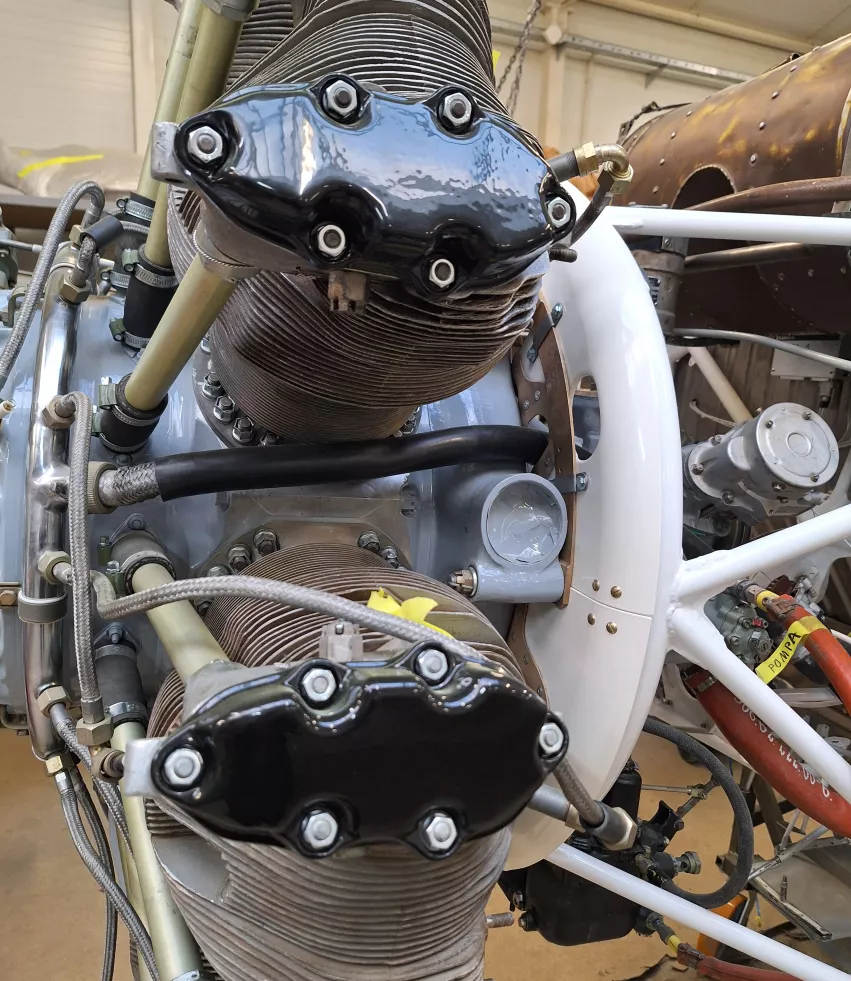
Pre-installed oil and fuel system lines
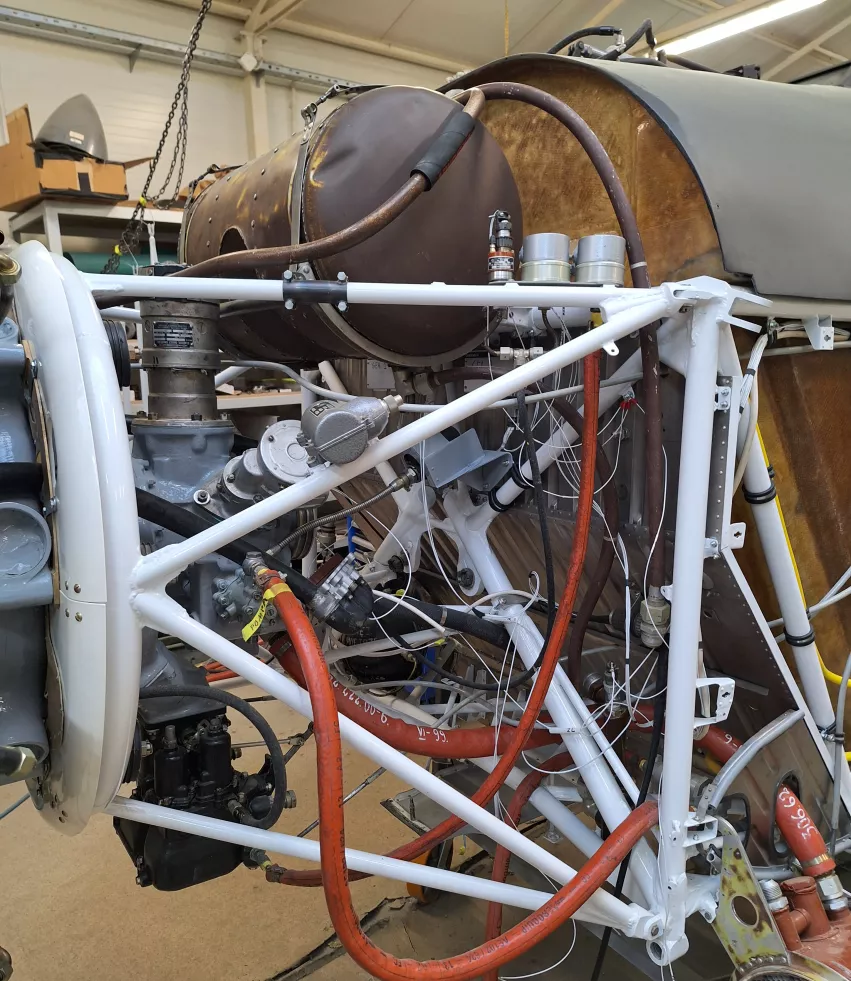
cover photo - paint removed from left wing

